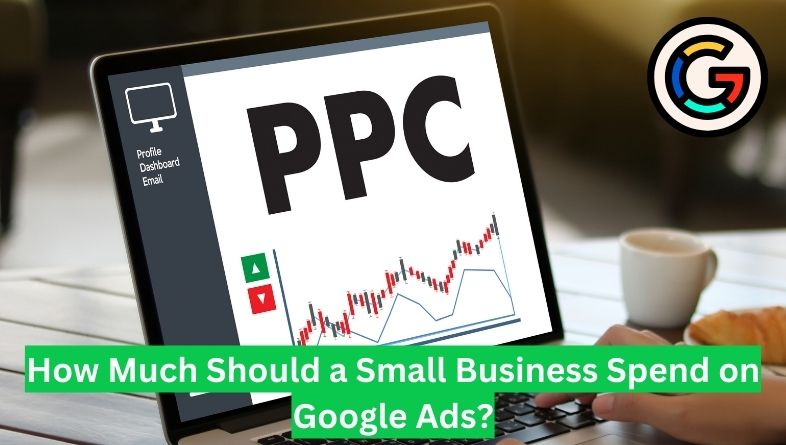Deciding how much a small business should spend on Google Ads is super important for its online success and business growth.
It’s like figuring out how much gas you need for a road trip – you want to make sure you have enough to get where you want to go without overspending.
There are lots of things to think about, like what kind of business you have, what you want to achieve, who your customers are, and how much money you have to work with.
In this guide, we’ll break it all down for you, sharing tips and tricks to help you decide how to invest your Google Ads budget wisely and get the best bang for your buck!
Define Your Objectives:
Before allocating a budget, clarify your advertising goals. Are you trying to get more people to visit your website, get more people interested in your business, sell more, or make more people know about your brand?
Your objectives will influence the type of campaigns you run and the budget required to achieve them.
Discover how understanding Google’s quality guidelines can further enhance your SEO efforts in our article on navigating Google Quality Guidelines for SEO.

Understand Your Market:
Research your industry to gain insights into typical advertising costs and competitive benchmarks. Analyze what your competitors are doing in terms of online advertising and estimate the level of investment required to remain competitive.
Calculate Customer Acquisition Cost (CAC):
Determine how much you’re willing to spend to acquire a new customer. To figure out how much it costs to get each new customer, just divide all the money you spent on marketing by the number of new customers you got.
This figure will give you a rough idea of how much you can allocate per customer acquired through Google Ads.
Learn about optimizing your website’s Google Page Speed in our piece on how to improve the Google Page Speed of a website.
Consider Your Revenue and Profit Margins:
Evaluate your average revenue per customer and profit margins. Ideally, your advertising spend should be comfortably covered by the revenue generated from Google Ads campaigns.
Determine the maximum percentage of your revenue that you’re willing to allocate towards advertising.

Start Small and Test:
If you’re new to Google Ads or unsure about the effectiveness of your campaigns, start with a modest budget. Allocate a portion of your marketing budget to Google Ads and monitor the performance closely. As you gain insights and optimize your campaigns, you can gradually increase your budget.
Set a Daily or Monthly Budget:
Google Ads allows you to set a maximum budget for your campaigns either on a daily or monthly basis. Calculate your budget based on your advertising goals, desired return on investment (ROI), and the duration of your campaigns. Ensure that your budget is sustainable and aligns with your overall marketing strategy.
Monitor and Adjust:
Continuously monitor the performance of your Google Ads campaigns and adjust your budget accordingly. Analyze key metrics such as click-through rate (CTR), conversion rate, cost per acquisition (CPA), and return on ad spend (ROAS).
Allocate more budget to high-performing campaigns and adjust or pause underperforming ones.
Factor in Seasonality and Trends:
Consider seasonal fluctuations and trends in your industry when setting your advertising budget. Allocate additional budget during peak seasons or when demand for your products or services is high. Conversely, you may reduce your budget during off-peak periods to optimize your ROI.

Invest in Optimization and Experimentation:
Allocate a portion of your budget towards optimizing your campaigns and experimenting with different ad formats, targeting options, and bidding strategies.
Continuous testing and optimization will help you maximize the effectiveness of your Google Ads campaigns and improve your ROI over time.
Seek Professional Guidance if Needed:
If you’re unsure about how much to spend on Google Ads or how to optimize your campaigns effectively, consider seeking guidance from digital marketing professionals or agencies with expertise in Google Ads management.
They can provide valuable insights and help you develop a customized advertising strategy based on your business goals and budget constraints.
Google Ads Is Not The Best Choice For All Businesses
While Google Ads can be a powerful tool for many businesses, it’s important to recognize that it may not be the best choice for everyone. Here’s why:
Cost:
Google Ads operates on a pay-per-click model, meaning you pay each time someone clicks on your ad. For some businesses, especially those with tight budgets or low-profit margins, the cost of advertising on Google may outweigh the benefits.
Competition:
Depending on your industry and target keywords, you may face stiff competition in Google Ads auctions. This can drive up the cost per click and make it harder for your ads to stand out, especially if you’re competing against larger companies with bigger budgets.

Audience:
While Google has a massive user base, not all businesses’ target audiences may be actively searching for products or services on Google.
For example, if your target demographic is primarily active on social media platforms like Facebook or Instagram, investing in Google Ads may not yield the best results.
Ad Formats:
Google Ads primarily consists of text-based search ads and display ads. If your business relies heavily on visual or video content for marketing, other platforms like YouTube or Instagram may offer more suitable ad formats.
Strategy:
Effective Google Ads campaigns require ongoing management and optimization to ensure they deliver results. If your business lacks the resources or expertise to manage Google Ads effectively, you may not see a positive return on investment.
In summary, while Google Ads can be a valuable advertising channel for many businesses, it’s essential to evaluate your specific circumstances, goals, and target audience to determine if it’s the right choice for you.

FAQs about How Much a Small Business Should Spend on Google Ads?
How do I determine the right budget for my business’s Google Ads campaign?
Determining the appropriate budget for your Google Ads campaign involves considering factors such as your business goals, industry competitiveness, target audience, and available resources.
By assessing these factors, you can allocate a budget that aligns with your objectives and maximizes your return on investment (ROI).
What percentage of my overall marketing budget should be allocated to Google Ads?
There’s no one-size-fits-all answer to this question, as the ideal percentage varies depending on your business’s specific needs and goals.
However, a common recommendation is to allocate a portion of your marketing budget to Google Ads based on its potential to drive results compared to other marketing channels.
How can I ensure that my Google Ads budget is being spent effectively?
To ensure your Google Ads budget is being spent effectively, regularly monitor and optimize your campaigns. Look closely at important numbers like how many people click on your ads, how many of those people become customers, and how much it costs to get each customer.
Use this information to find ways to do better and decide where to spend your money. Additionally, consider implementing budget management tools and strategies provided by Google Ads to maximize efficiency.
Should I start with a small budget and increase it over time, or invest more upfront?
The approach to budget allocation depends on your business’s goals, risk tolerance, and available resources. Some businesses may opt to start with a smaller budget to test the effectiveness of their campaigns before scaling up, while others may prefer to invest more upfront to achieve faster results.
Ultimately, the best approach is to carefully assess your priorities and adjust your budget allocation accordingly.
Conclusion:
In conclusion, there’s no one-size-fits-all answer to how much a small business should spend on Google Ads. It’s essential to carefully evaluate your objectives, market conditions, revenue potential, and budget constraints to determine the optimal advertising investment for your business.
By following these guidelines and continuously monitoring and optimizing your campaigns, you can achieve a positive ROI and drive sustainable growth through Google Ads.







